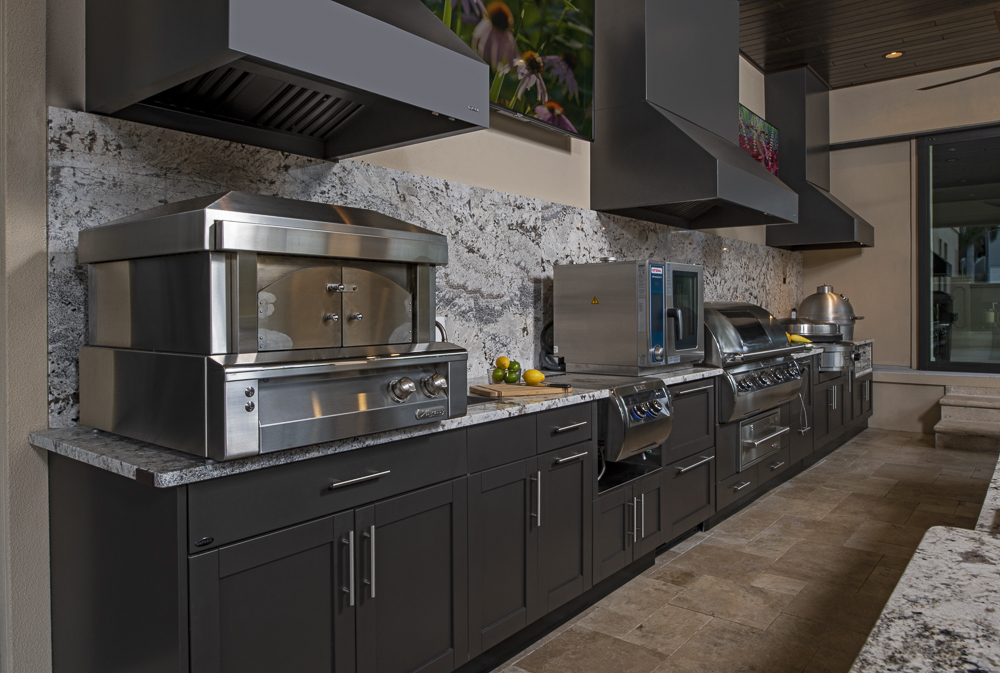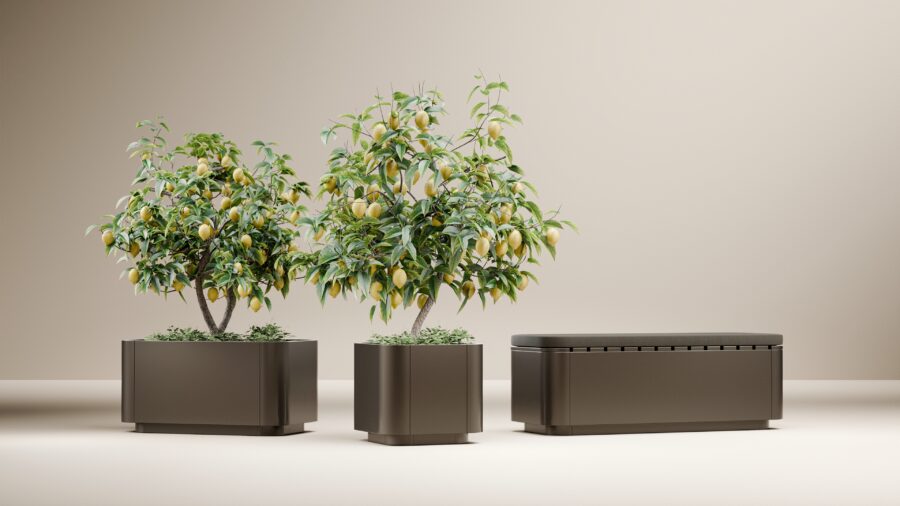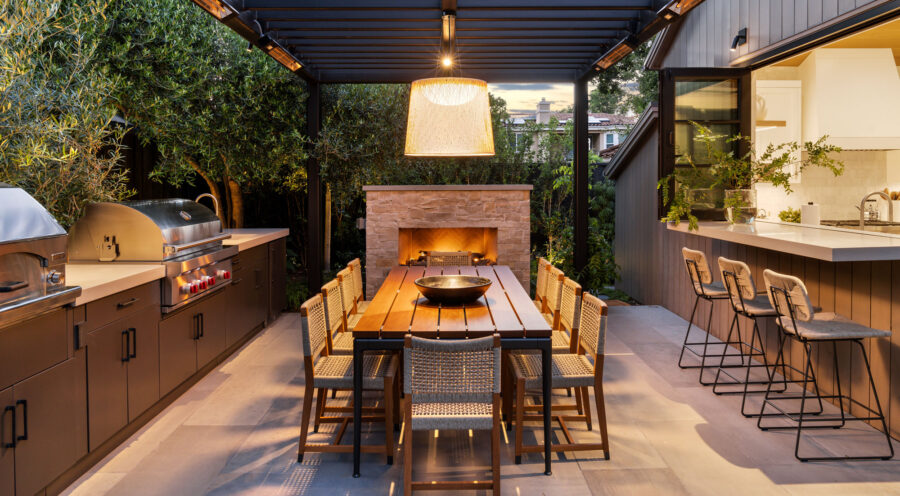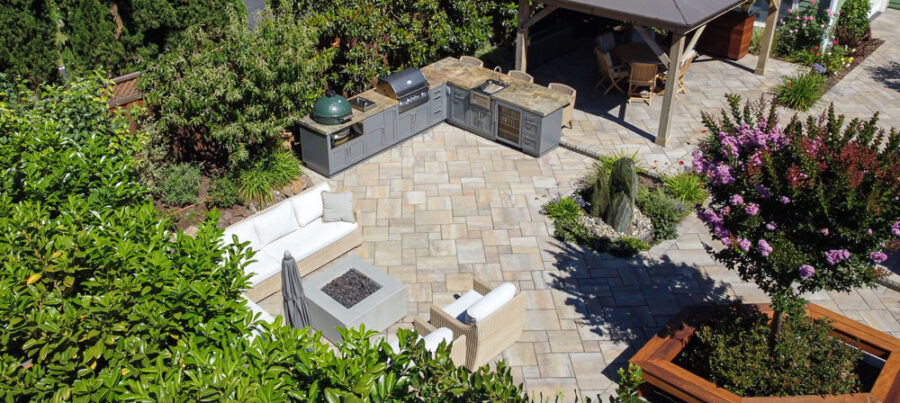Building an outdoor kitchen may be designed and constructed out of many different materials, such as wood, concrete, or stainless steel. In order to make the most out of your outdoor space and kitchen investment, it is important to be mindful of the material that you choose. Depending on geography, the material should be able to withstand varying degrees of weather effects related to temperature changes, rain, sun, and/or salty ocean air. Here we highlight a few options, examine the pros and cons of each type, and discuss how a powder-coated stainless steel outside kitchen manufactured by Danver is the best option for the outdoor kitchen idea you have in mind.
Related – Outdoor Kitchen Plans: How to Plan the Ultimate Outdoor Kitchen with Your Clients
How to Choose the Perfect Outdoor Kitchen
Wood Outdoor Kitchen
Wood is a popular choice for building an outdoor kitchen, as it is a natural material that blends the concept of the indoors with the backyard. It mimics the look and feel of an indoor kitchen, as most indoor cabinets and drawers are made with wood. For many, it is aesthetically pleasing and allows for plenty of customization options with paint or stain. However, wood has drawbacks as a material for your outdoor living space. If placed outside for lengths of time in wet weather, wood will rot over time and will need to be replaced. Repeated exposure to the elements will degrade the finish as well, requiring continuous maintenance. If the outdoor kitchen design includes cooking appliances such as a grill or pizza oven, there is also a concern for fire safety. Certain measures can mitigate the effects of heat and wet weather, such as by using pressure-treated wood and cement backer board.
Concrete Outdoor Kitchen
Concrete is a durable material that is also affordable and fire-resistant. As such, it is certainly a viable option to use concrete blocks to construct a backyard kitchen. Some customization options exist for concrete, such as by incorporating decorative elements like stone and tile. It is beneficial to use concrete near outdoor kitchen appliances, like a refrigerator, oven or island, as it holds up under extreme heat. A few drawbacks to consider are installation, the look of concrete, and maintenance. Working with concrete block requires masonry skills, so the outside kitchen would have to be properly installed by a contractor. The look of concrete is not universally appealing either, so this material may only work for some. A concrete countertop, or any concrete material for your outdoor living space, is also susceptible to cracking, breaking, discoloration, and crumbling over time, requiring replacement and upkeep.
Stainless Steel Outdoor Kitchen
Stainless steel is an alloy composed mostly of iron with other metals. For a material to be considered stainless steel, at least 10.5% must be chromium. The two most common grades for an outdoor kitchen area are 304 and 316 (marine grade). The grades are determined by their alloy composition, although both are high-quality and durable options for your outdoor kitchen. Bare stainless steel is attractive, as it provides a sleek and modern look. The main issue with bare stainless is that it is stainless, not stainproof. As such, weather and everyday wear-and-tear can contribute to corrosion, rust, scratches, and stains if not properly maintained. Otherwise, stainless steel (depending on the grade) is very resistant to heat and chemicals and will not fade or crack like other materials (cement board natural stone, tile, etc.).
Related – Outdoor Kitchen Installation & Specs
What Material is Best for an Outdoor Kitchen?
Stainless steel is the best option for your outdoor kitchen design. As discussed, while wood and concrete have benefits, they also have several drawbacks. When considering the pros and cons of each material for your outdoor space, stainless steel provides the most overall benefits. Stainless steel is the most reliable and durable to withstand weather effects and everyday wear and tear over time. To provide even more protection to the outdoor kitchen cabinet and dining area, stainless steel can be powder coated, which makes it virtually maintenance-free.
A powder coat finish is highly recommended for color customization, durability, and to minimize maintenance. Danver offers 15 exclusive colors and 9 realistic wood grain finishes to protect your stainless outdoor kitchen cabinets and drawers and provide a vibrant, long-lasting finish. As such, you can get the look of real wood without the disadvantages and choose any color to suit your living space style.
Over 85% of the building materials manufactured in our Connecticut factory are powder coated. In the 20 years we have been delivering these kitchens, we have virtually no instances of rust or degradation on powder-coated surfaces.
Ready to Transform Your Outdoor Kitchen Space?
Stainless steel outdoor kitchens are the best investment above any other style — for appearance and cooking. Guests will be delighted to join you in your backyard with an impressive stainless steel kitchen design. Danver Stainless Outdoor Kitchens offers many options for color and finishes, door styles, counter space, cabinet sizes, and layouts. Call us today for a quote or use our contact form to discover the benefits of stainless steel for your outdoor patio so you achieve the best outdoor entertainment space!
This article is based on industry knowledge and research by outdoor kitchen design professionals, including our in-house experts and engineers with decades of experience.Our goal at Danver is to provide factual information on relevant topics to help readers make informed decisions about their outdoor living spaces.
This article uses trusted sources with references hyperlinked to the source material.




